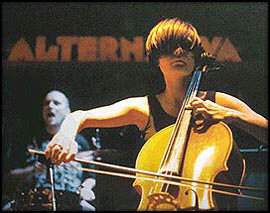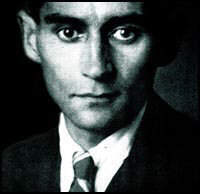 Culture Culture |
The Czechs are a plain-spoken, even-tempered people, revealing a spectrum of cultural, religious and political influences that is surprisingly broad for such a small country - German and Austrian to Polish and Hungarian, liberal to deeply traditional, global-thinking to fiercely nationalistic. The largest church is the Roman Catholic Church, though in 1991 fewer than 40% of Czechs called themselves Catholics, and even fewer attend church regularly. The next largest church is the Hussite Church and there are numerous other Protestant denominations, the largest being the Evangelical Church of Czech Brethren. Prague has the largest Jewish community in the republic, with about 6000 members; smaller enclaves are in Ostrava and Brno.

Most travellers are impressed by the Czech Republic's architectural splendours, which include some of the finest Baroque, Art Nouveau and Cubist buildings in Europe, but Czechs have also excelled at less noticeable art forms, such as illuminated manuscripts, religious sculpture, and marionette & puppet theatre.
Czech music runs the gamut from classical to jazz & punk. Apprentice butcher Antonín Dvorák is generally regarded as the most popular Czech composer. He is noted for his symphony From the New World, composed in the USA while lecturing there. Czech jazz musicians were at the forefront of European jazz after WW II but this came to an end with the communist putsch. Keyboardist Jan Hamr, who escaped to the USA, became prominent in 1970s American jazz-rock under the name Jan Hammer. Since the Velvet Revolution, the jazz scene in Prague has been especially lively. The grim industrial north, particularly Teplice, is the hub of the Czech Republic's punk movement.
| 
The most famous Czech writer is undoubtedly Franz Kafka, who, with a circle of other German-speaking Jewish writers in Prague, played a major role in the literary scene at the beginning of this century. Internationally renowned `modern' Czech novelists include Milan Kundera, Ivan Klima and Josef Skvorecky. Much less well-known is the Czech poet Jaroslav Siefert, who was awarded the Nobel Prize in 1984. The playwright Vaclav Havel now operates on a somewhat larger stage.
Czech cuisine is basically central European, with German, Hungarian and Polish influences. Meat is a huge feature, along with big portions of dumplings, potatoes or rice topped with a thick sauce, and a heavily cooked vegetable or sauerkraut; the standard quick meal is knedlo-zelo-vepro (dumplings, sauerkraut and roast pork). Caraway seed, bacon and lots of salt are the common flavourings. Vegetarians and cholesterol sufferers beware!
 Events Events |
Practically every day is a saint's day in the Czech Republic, and 'special days', festivals and public holidays are widely acknowledged. On 30 April in Prague, the Czech version of Walpurgisnacht, Paleni Carodejnic (Burning of the Witches) is a pre-Christian festival for warding off evil. Politically incorrect witch burning is now replaced by all-night bonfire parties on Kampa Island and in suburban backyards. High culture follows for the remainder of the year with the Prazske jaro (Prague Spring) International Music Festival in April and May, the Prague International Book Fair also in May and the Mozart Festival in September. The Christmas-New Year season closes the year quietly for most of the Czech Republic but Prague is overcome with tourist revelry during a fast and furious holiday season. |

